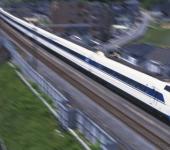Holistic Latency Monitoring: Finding the Chain’s Weakest Link
In auto racing everyone has a fast car, so rarely does that raw speed win the race. The decisive differentiator is instead the driver’s ability to make decisions better and faster than the rest of the field. Low latency trading is exactly the same. Compared to the time it takes to acquire market data, send an order to an execution venue, or even for the matching engine to execute an order, the internal decision-making process has become the fat end of the latency wedge and it is where the largest opportunity gains are to be made in the reduction process. Not getting there faster, but rather more quickly deciding where to go.
Identifying where the trouble spots exist is no mean feat but it is a feat that nevertheless must be tackled since failure to identify them can result in business Armageddon. It is of little importance if a bank has invested millions in a bleeding edge pricing engine if it’s still relying on old messaging middleware to transmit data to the connection manager. In such a case, that ultra-competitive quote won’t make it out in time to clients and they will take their business elsewhere.
Banks also have to think carefully about capacity constraints and potential bottlenecks that can occur as a result of an increase in future business volumes. This type of insight boils down to a very fine understanding of why latency is occurring today and why that might bear little relation to how it will manifest itself tomorrow. It is a rare clairvoyance reserved for the few that are intellectually equipped to understand it.
Application log files have been an unlikely hero in their analysis. Using this antiquated resource tool, banks have been able to identify and track the singular pieces of data that constitute a trade and so determine what happens over the course of its life within their four walls: where it was left to queue, where it got lost in translation, where it finally met its end. Once the data has been aligned with server loads, it has also been possible to see how certain applications weigh on the infrastructure and, from there, statistically model the impact that future business volume growth will have on their businesses.
When it comes to implementing solutions, addressing one component, invariably affects others. Thus piecemeal approaches are, at best, inefficient, at worst, unproductive. Latency is a challenge made up of inter-related parts which, when addressed together, deliver success in excess of their sum. As a result, more revolutionary, holistic approaches that allow for greater efficiencies and the cross-fertilisation of latency reduction skill sets are emerging.
The TABB Group Vision Note Holistic Latency Monitoring: Finding the Chain’s Weakest Link is based on conversations with trading firms, high speed trading solution providers and financial services institutions. The study provides a detailed description of how firms are using application log files coupled with statistical analysis to better understand the variable relationship between business volumes and latency so that they might build out their businesses with confidence, both in terms of re-engineering systems architecture, deploying new infrastructural resources, implementing standardised messaging middleware or re-writing code to bring outdated, legacy applications up to speed in a modern electronic trading world.
- FinTech





